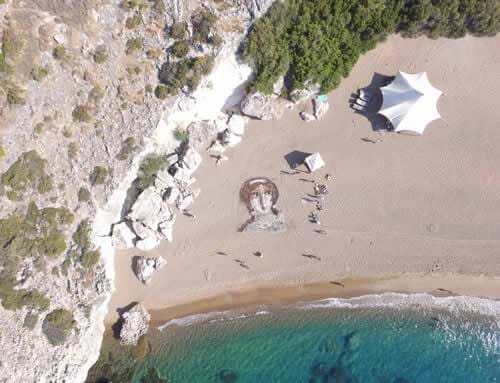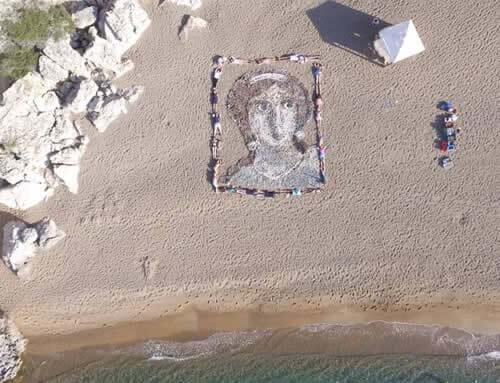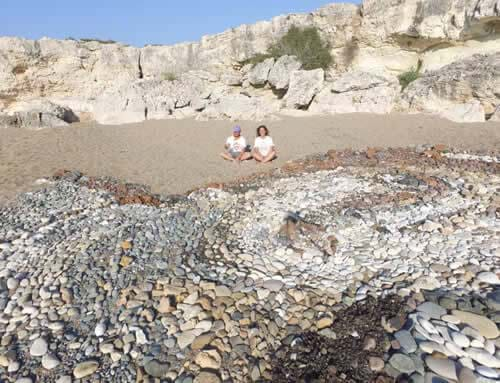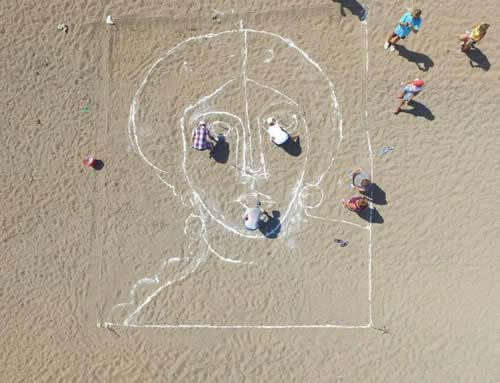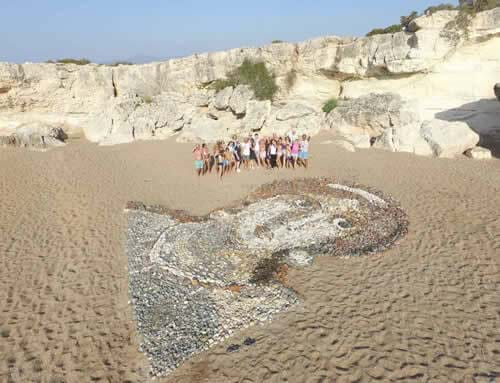1200 BC, Aphrodite was also called "Anassa" in Cyprus, meaning Queen in ancient Greek. Homer first named her queen in his scripts. The goddess wears a crown made of herbs and plants, a symbol of prosperity and in many kingdoms she appeared on currencies as the great Goddess of Cyprus and a symbol of protection.
Talented young artists Katerina Foukara and Arsenty Lysenkov will create a portrait of Venus Anassa. It will be constructed at Anassa’s beach and they will be using materials found in nature. Their inspiration is based on the Roman mosaics in Paphos, created with local stone, as well as the frescoes of Pompeii and in particular a Roman copy of a Greek portrait of Aphrodite. They have collected many different types of stones from the different areas of the Paphos region. The choice of materials (water, stone and earth) represent the three main natural elements which evoke our ancestral emotions – stone (petra), meaning constant, unchanging and eternal as opposed to water, meaning motion and energy; and finally the soil as the active ingredient of human nature. These three elements will be used to create the piece. During the course of this project the installation will be exposed to the elements, at risk of change or alteration-the artistic process and progress of this project will be recorded during all stages with photographs and videos.
